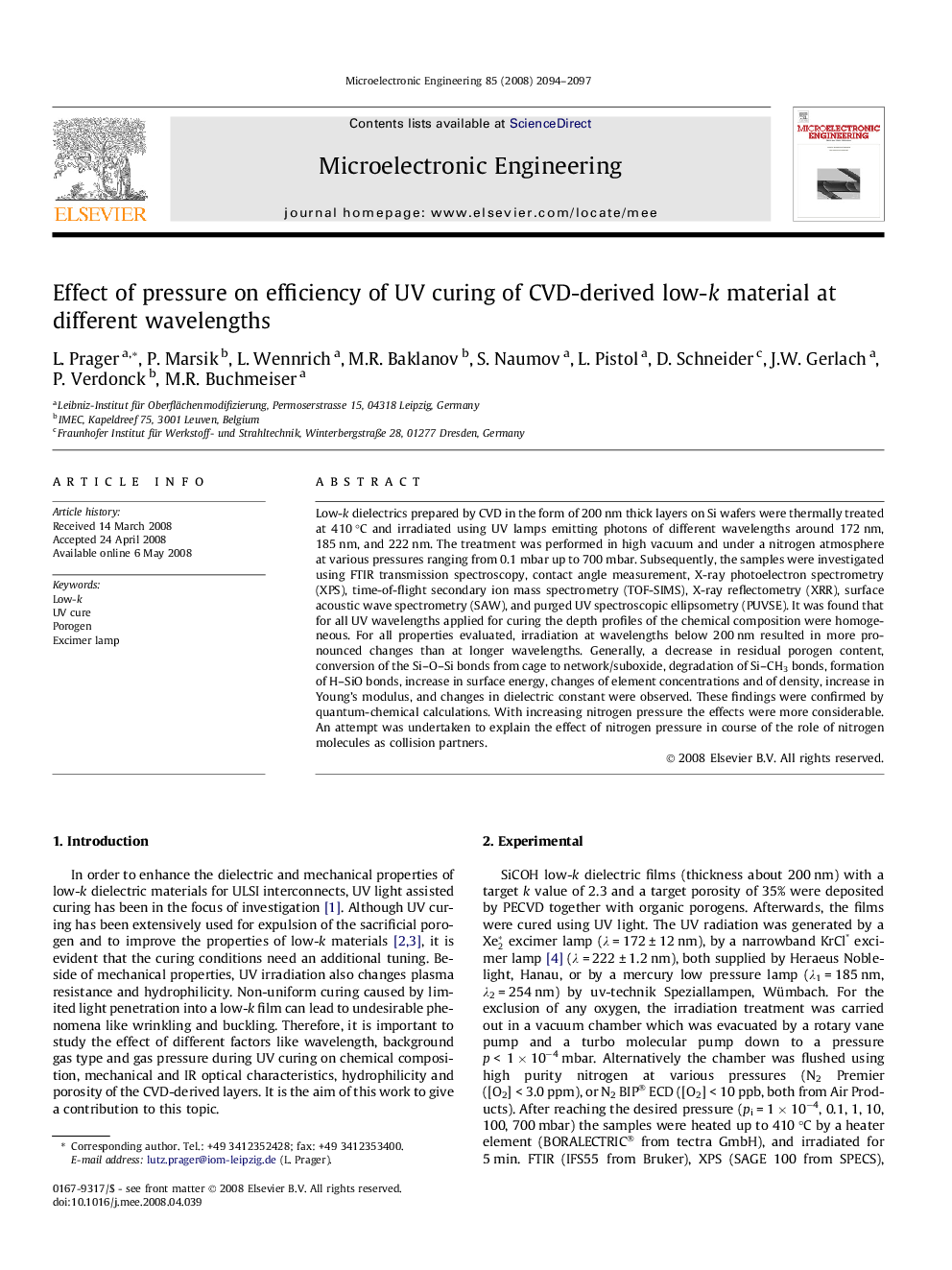| Article ID | Journal | Published Year | Pages | File Type |
|---|---|---|---|---|
| 540690 | Microelectronic Engineering | 2008 | 4 Pages |
Low-k dielectrics prepared by CVD in the form of 200 nm thick layers on Si wafers were thermally treated at 410 °C and irradiated using UV lamps emitting photons of different wavelengths around 172 nm, 185 nm, and 222 nm. The treatment was performed in high vacuum and under a nitrogen atmosphere at various pressures ranging from 0.1 mbar up to 700 mbar. Subsequently, the samples were investigated using FTIR transmission spectroscopy, contact angle measurement, X-ray photoelectron spectrometry (XPS), time-of-flight secondary ion mass spectrometry (TOF-SIMS), X-ray reflectometry (XRR), surface acoustic wave spectrometry (SAW), and purged UV spectroscopic ellipsometry (PUVSE). It was found that for all UV wavelengths applied for curing the depth profiles of the chemical composition were homogeneous. For all properties evaluated, irradiation at wavelengths below 200 nm resulted in more pronounced changes than at longer wavelengths. Generally, a decrease in residual porogen content, conversion of the Si–O–Si bonds from cage to network/suboxide, degradation of Si–CH3 bonds, formation of H–SiO bonds, increase in surface energy, changes of element concentrations and of density, increase in Young’s modulus, and changes in dielectric constant were observed. These findings were confirmed by quantum-chemical calculations. With increasing nitrogen pressure the effects were more considerable. An attempt was undertaken to explain the effect of nitrogen pressure in course of the role of nitrogen molecules as collision partners.
